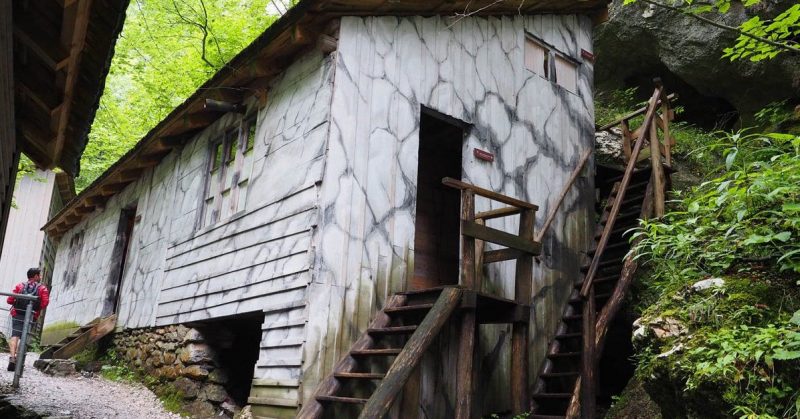Deep in a Nazi-occupied part of Yugoslavia (now Slovenia) an enterprising group of Partisans set up an amazing hospital to treat its injured fighters who could not go to any of the local medical facilities. Built in a remote narrow ravine the Slovene Partisans chose the steep Pasica Gorge near to the town of Cerkno to create a military-style hospital complex, building it with whatever materials they could obtain without the Germans being made aware.
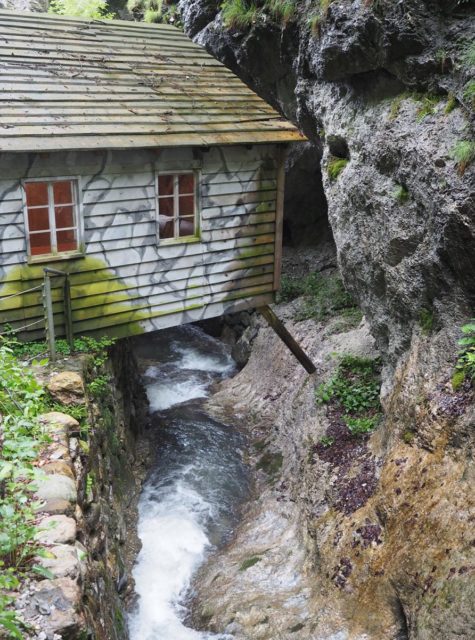
Picture © Geoff Moore www.thetraveltrunk.net
Starting with just one hut, the ravine slowly filled, with over 14 huts by the end of the conflict in the Balkans area.
All the wooden buildings were painted to camouflage them from being detected by the Luftwaffe.
The idea to build the hospital came from Viktor Volčjak but it was physician Franja Boic Biovec that the hospital was named after. He started work there in 1944.
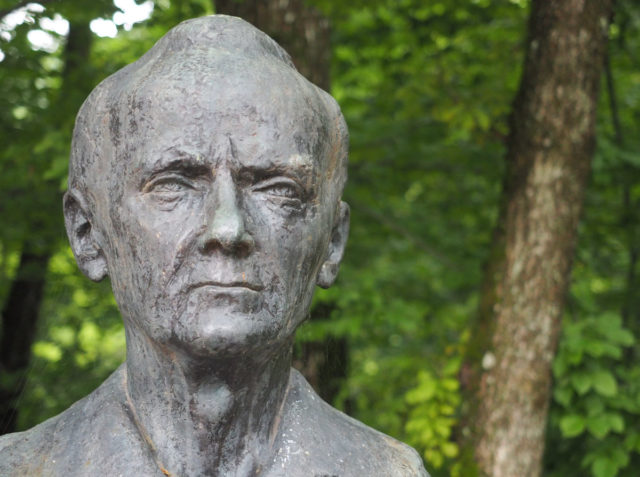
Picture © Geoff Moore www.thetraveltrunk.net
Machine gun posts high above the noisy river that runs steeply down the gulley guarded the forested valley entrance and it was that torrent of water that helped the partisans to keep the hospital a secret for so long.
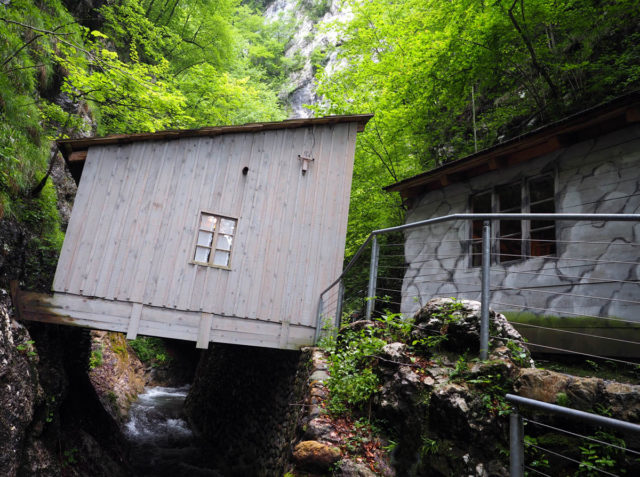
Picture © Geoff Moore www.thetraveltrunk.net
For every patient who was carried into the hospital was manhandled and blindfolded on stretchers up the boulder strewn and slippery river-bed before they could get more essential treatment from the volunteer doctors and nurses which include an Italian.
Retracting bridges also helped to steer searching Nazi soldiers away from detecting the entrance. Workers had hand cut steps into the cliff face to help ease the way for staff and patients.
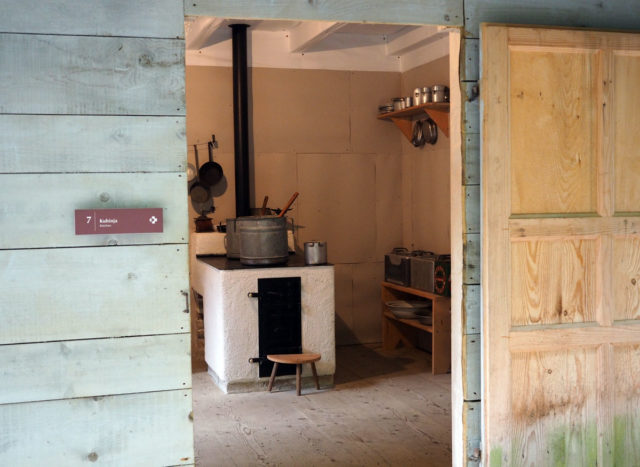
Picture © Geoff Moore www.thetraveltrunk.net
Up to 120 patients could be treated there by the later stages of the conflict. Building continued with an isolation cabin, laundry, kitchen, staff accommodation, workshop and general wards. Over a period of 18 months, it treated 578 people, who many of them had access to a functioning operating theatre and even Xrays!
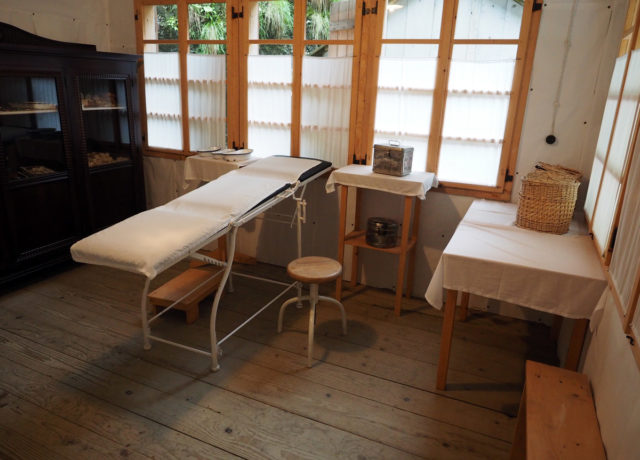
Picture © Geoff Moore www.thetraveltrunk.net
German soldiers did on a number of occasions try to search out the hospital but in the end it was never discovered although it is believed one German did know all about it, as he was treated there and remained to help after his treatment until the end of the war.
The hospital closed on May 5th, 1945. The buildings have been carefully rebuilt after a flood in 2007 washed them all away apart from one of the original huts. The whole complex now functions as a museum and is looked after by the Cerkno Museum staff with guides like Sandro Oblak who pass on many interesting facts and details about how the hospital came into being and how it functioned during the war.
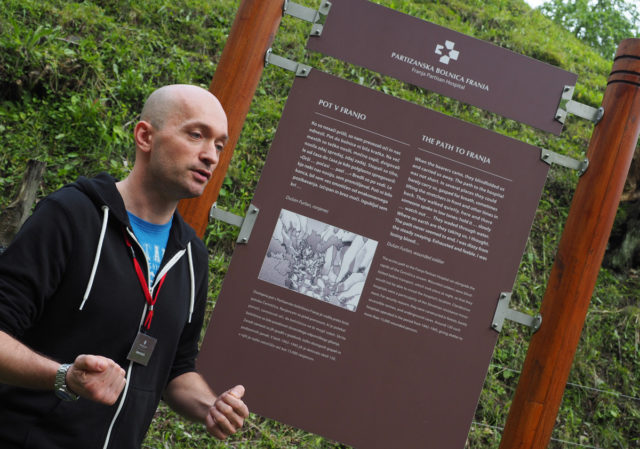
Picture © Geoff Moore www.thetraveltrunk.net
Back in 1997, the American Association of Air Force Veterans gave the hospital museum a special award for treating one of their downed pilots, Harold Adams. It is also on a tentative list of the candidates for a UNESCO World Heritage List.
The complex is moving to visit and the fact that it survived as well as many of its patients was a miracle. It deserves every award and all the support it can get.
